
Feel free to add tags, names, dates or anything you are looking for


In the 1940s, archaeologists discovered the necropolis of the Pitiakhshs, rulers of Iberia (eastern Georgia) in Armazi, which was part of the ancient Georgian capital, Mtskheta. The graves of the ruling aristocracy were distinguished by numerous precious objects, including various types of jewelry: necklaces, rings, earrings, buckles golden clothes adornments. The discovered objects are striking for their sophisticated technical and aesthetic qualities, indicating the highly-developed tradition of goldsmithery in eastern Georgia during the first centuries CE.
The majority of the Armazi gold objects from the 2nd-3rd centuries are original works by local masters. They share stylistic and technical features that reveal centuries-old tradition. Although Georgia maintained close cultural links with the Hellenistic-Roman and Near Eastern worlds, its artistic production has s a clearly pronounced individual character.

Bersuma Pitiakhsh’s dagger handle
A variety of artistic and technical methods were used to produce gold jewelry: granulation, niello, filigree, inlay, and openwork. The jewelry decorated with precious and semiprecious stones. Significant examples of craftsmanship of Armazi masters are the handle of a dagger from Pitiakhsh Bersuma’s tomb and the golden dagger scabbard of Pitiakhsh Asparuk.

Aspauruk Pitiakhsh’s dagger sheath
The handle of the iron-bladed dagger is inlaid with almandines of various geometric shapes. The scabbard, made from unique 0.5mm gold plate, is incrusted with stones of various size and shape. The point of the sheathing has a small medallion with the head of a calf or ram executed in cloisonné enamel, which is one of the earliest preserved examples of this technique. The coloristic effect of the stones against the glittering gold surface creates an impressive interplay of color and light. Both objects were presumably insignia of high-ranking individuals.

Ring with a portrait gem of Asparuk Pitiakhsh
Asparuk Pitiakhsh interred in sarcophagus I of Armazi cemetery is depicted on a seal ring with an intaglio bust. The sardonyx gem portrays a mature man in profile with bared chest; the features of his face with a long beard and big nose, indicate that the image represents an individual with a strong character. Here we can see a genuine portrait of a ruler of Iberia. The bust is accompanied by with a Greek inscription indicating his name – Pitiakhsh Asparuk. It has been suggested that he was the son of Zevakh and Karpak depicted on the garnet gem found in the same burial place.

Golden plate with a portrait gem of Zevakh and Karpak
A carved gemstone featuring a double intaglio portrait of Zevakh and Karpak accompanied with a Greek inscription demonstrating the couple’s tender love and affection: “Zevakh, my life Karpak.” The gem was incorporated into a golden plate, which makes up part of a belt buckle.

Necklace with pendant
Jewelry from the Armazi necropolis demonstrates the original design and high technical skills of their masters. Two necklaces deserve particular attention. These unique pieces of jewelry were made by extraordinary masters with refined taste and high technical skills. The originally designed and artfully crafted openwork necklace with almandines has a central piece - a round pendant “box” decorated with radially arranged almandines and turquoise.

Necklace and pendant with amethyst ram’s head relief
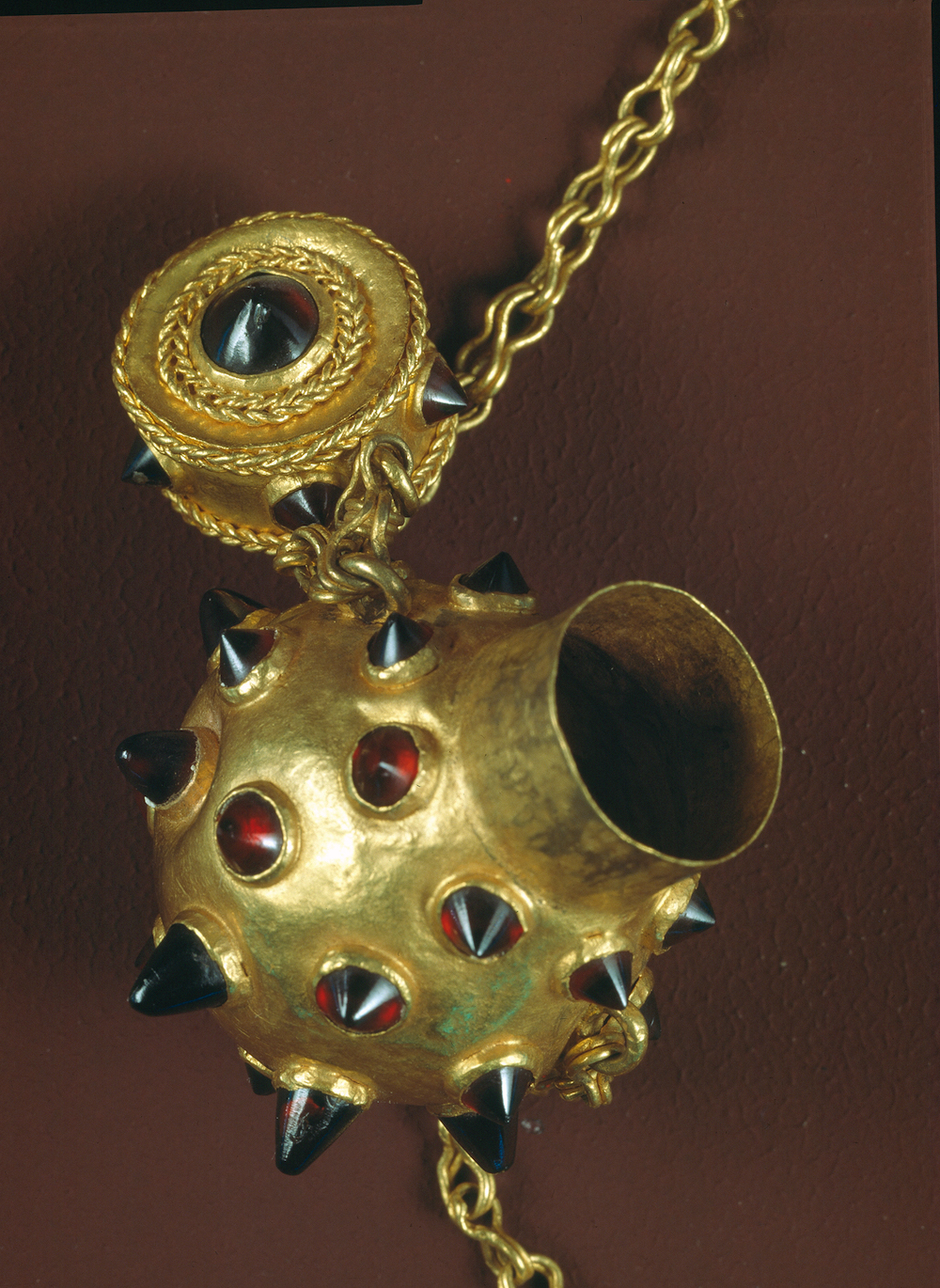
Necklace and pendant with amethyst ram’s head relief. Detail.
The use of multicolored stones is a hallmark of the Iberian masters. Another golden necklace with a pendant and attached flacon attracts attention with its intricate decoration. The pendent, round medallion with a lid bears a carved amethyst ram’s head, which is encircled with garnets and turquoise. The sculpted head of the ram presumably had a protecting, amulet-like function. The flacon is decorated with cone-shaped garnets. This exquisite piece item of jewelry was discovered in the sarcophagus of a noblewoman from the Pitiakhsh family.
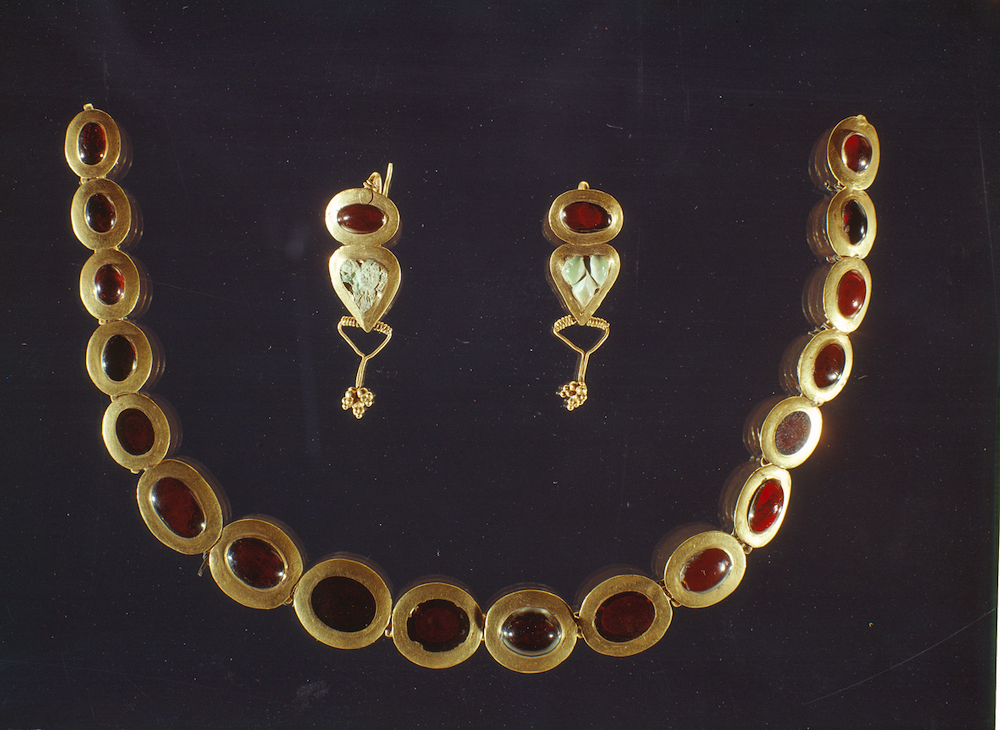
Garnet necklace, earrings
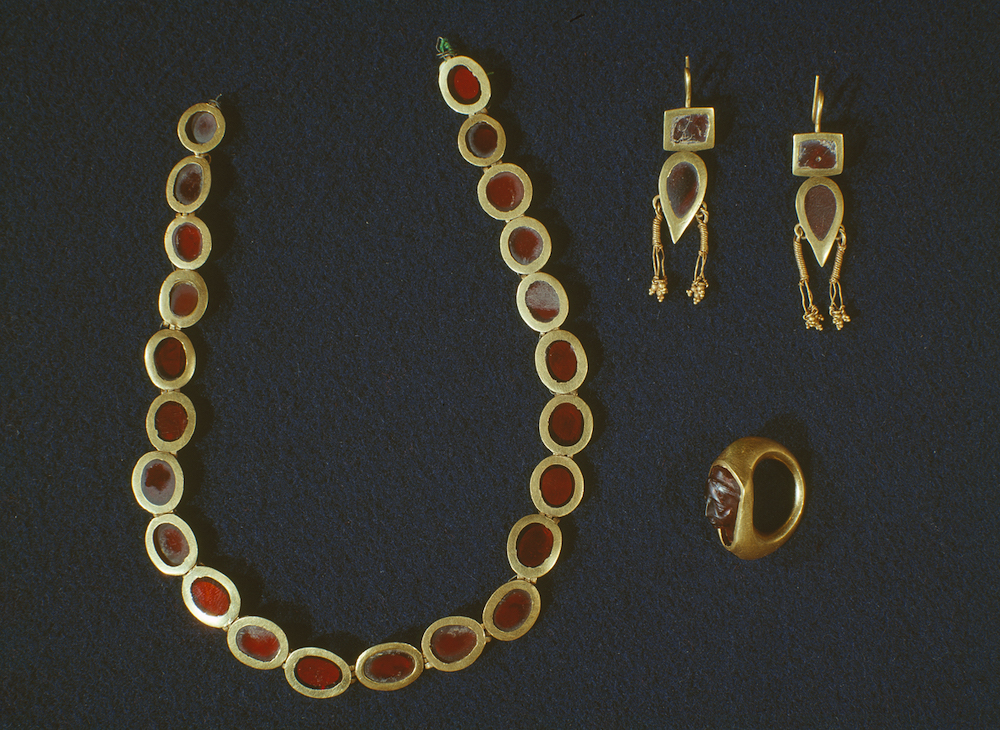
Garnet necklace, earrings
Among the rich inventory of the necropolis are golden necklaces and bracelets. Several bracelets reveal a similar structure and decoration - the separate plaques are connected to each other by gold joints, which also have a decorative function.

Bracelets

Openwork bracelet with nephrite gem
They are inlaid with lazurite, malachite and almandines. One type of bracelets, combines openwork technique with the polychrome of semi-precious stones. They consist of two types of plaques – openwork plaques decorated with malachite trefoils and stylized bean-shaped pattern, alternate with those composed of a pair of semi-cylindrical garnet beads and smaller malachite and lazurite beads between them.
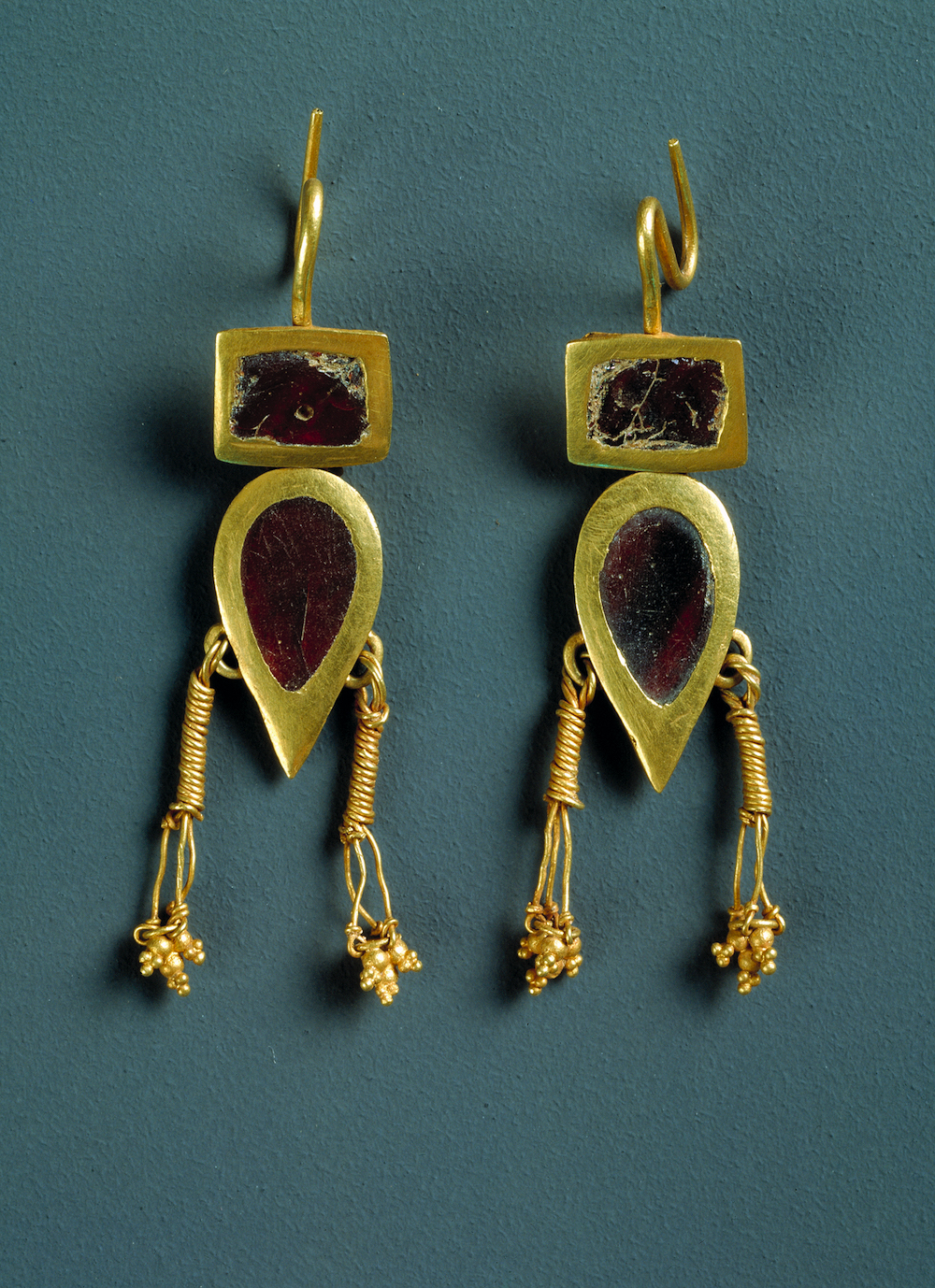
Earrings

Earrings
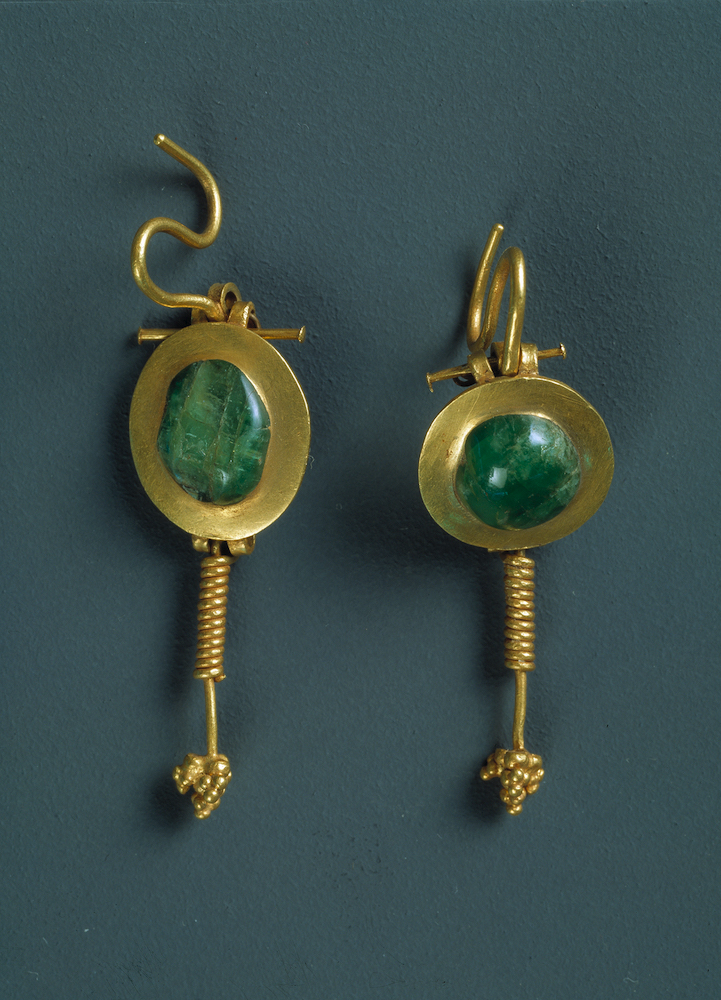
Earrings
The earrings from the Armazi tombs demonstrate the same tendency of decoration – multicolored stones and glittering gold combine to create a sophisticated decorative effect. They indicate the high position and wealth of their owners.

Clasp

Pendants with turquoise and garnets
The Armazi “treasures” were produced in local workshops. The synthesis of various traditions and original forms, design and techniques illustrate the well-developed art of goldsmithery in the Kingdom of Kartli, or Iberia, in the first centuries of the first millennium. The inventory of the necropolis gives us a clear idea about the society at that time: its wealth, lifestyle and culture. In turn, the “treasures” elucidate that during the first centuries CE, Iberia boasted a highly developed society with powerful and influential ruling authorities who possessed significant wealth and led a luxurious life. The rich inventory of the Pitiakhshs’ burials must be considered as a demonstration of their power and social status.